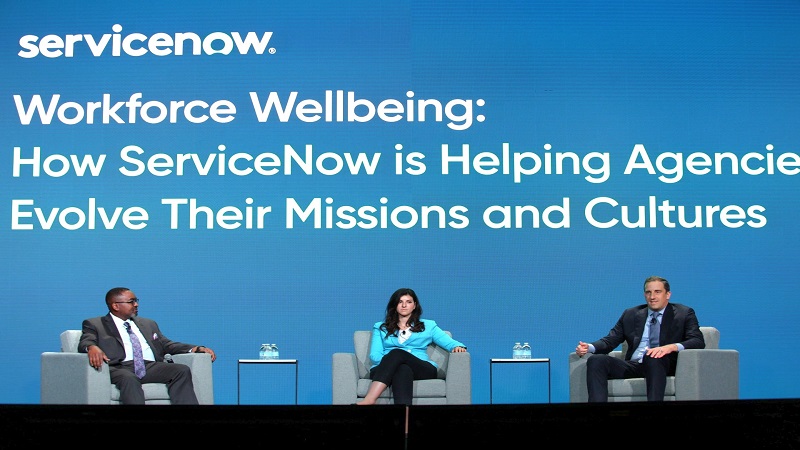
The Department of Defense (DoD) employs approximately 2.8 million people – civilian, active duty military, national guard, and reservist – and to support such a large workforce, Pentagon officials are using digital services to ensure the wellness of their employees and build a supportive workforce culture.
During a panel session at the ServiceNow Federal Forum event in Washington, D.C., on March 13, DoD officials explained that technology has allowed the department to offer civilian and military employees the services they need to ensure employee wellness.
John Carbone, the deputy director of the Civilian Force Management Directorate for the U.S. Air Force (USAF), talked about the importance of more fully developing and deploying telework services during the pandemic.
“Telework services allow us as a department to ensure that our employees can better balance work and life,” Carbone said.
Telework services have offered the DoD civilian workforce the flexibility they need to accomplish their work from anywhere. Telework also has expanded the department’s talent pool, which aids in recruitment and retention efforts, Carbone explained.
“I will admit developing a hybrid workforce is challenging because we are such a broad service,” he said. “We have white-collar workers, blue-collar workers, military members, and a lot of people not in a traditional office setting network. It’s incredibly challenging. But developing a hybrid workforce not only supports our employees but it gives us as a service and a department a competitive advantage,” Carbone said.
The Air Force is taking steps to study the impact and readiness of a hybrid workforce and how to ensure it’s able to ensure warfighting capability perspective to maintain the continuity of operations, he said.
In addition, remote communication services have also offered active-duty military officials the support they need while on deployment.
Andrea Goldstein, the acting director for Force Resiliency at the Department of the Navy, explained that in earlier times active duty service members – particularly in the Navy – went months without being able to communicate with their health providers or family members.
“Our ships now offer our service members the resources that they need to connect remotely with family members and even their health providers. As we provide more resources like these, we see our people are happier because they’re more connected, but they also could have access to resources,” Goldstein said.
In addition, the Pentagon is also focused on preventing personnel burnout, and DoD components and military branches have different initiatives underway in this effort.
The USAF is developing an integrated delivery of services to ensure that civilian and military service members can access the resources they need easily and without hardship.
“There are times when some of our employees attempt to acquire services for either themselves or their families and it causes more stress than it should. By using digital capabilities, we can create a platform that streamlines the process for employees to access services, especially for our service members,” Carbone said.
The Navy is on the hunt for a massive influx of “prevention” and “response” personnel – 2,000 response personnel across the country dedicated to supporting service members dealing with mental health issues, and 4,000 prevention personnel to develop resources and strategies to support service members and civilian employees and prevent burnout.
